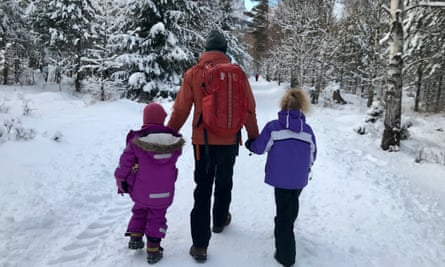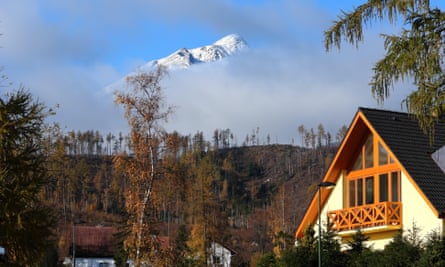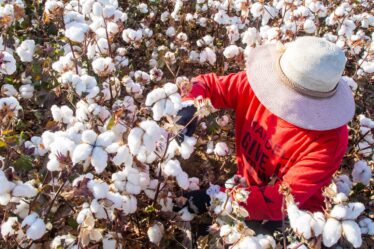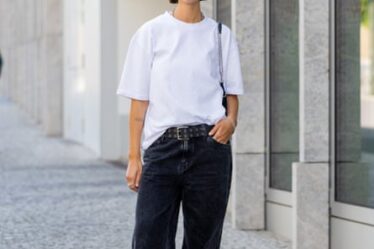
The Tatra mountains in Slovakia had been touted as a great destination for a family skiing holiday. But as we stumbled out of the sleeper train from Prague at Poprad station at 6am, we were more anxious than excited. From the station we could see the jagged peaks of the High Tatras rising like black and white knives with a luminous pre-dawn glow against a pale blue night sky. Across Europe the news had been dominated by the lack of snow, that climate change was bringing about the end of the skiing industry as we know it.
As the mountain railway from Poprad climbed up through the foothills and wound its way through forests of spruce and larch, stopping at several mountain villages before arriving at the main resort of Tatranská Lomnica, we were slowly reassured. The snow was not deep, but deep enough, and above us we could see the sweep of pistes beneath the peaks and the lights of the snow tractors crawling about their tasks.
The Tatras are not the Alps. There aren’t miles and miles of runs and lifts, and the prices of the lift passes reflect that (€285 for an adult, €200 for a child for a week). However being part of the Carpathian mountain range that continues from Slovakia down into Romania, it is further east, more continental and thus, so far at least, the reliable recipient of more snow than the Alps.
The Slovakian approach to skiing is also a key difference. As we rode the chairlifts and cable cars up the slopes, we saw on the tracks beside the pistes dozens of ski-tourers climbing the mountain on skins, and further down, around the lake, similar numbers of cross-country skiers following waymarked trails that stretch for miles all around the foothills of the mountain range. And the resort is not a ski resort as such, but a place for winter holidays. In a time when the industrial machinery of downhill skiing is starting to look like a stranded asset, this could well be a good thing.
The children loved their ski lessons with Ema and Katka of Premiere Ski School every morning (around €20pp an hour for individual lessons). But this more expansive definition of what a winter holiday entails made for a richer experience and reduced the emphasis on the quality of the snow alone.
One afternoon we tobogganed on the famous Hrebienok run – a 2.6km track through the forest with a funicular railway to take you back to the top again. And we walked on trails through the pristine forest to the frozen waterfalls and the Rainerova Hut where glühwein and hot chocolate are served beneath pine trees.
My wife doesn’t ski. She was less concerned about the snow than what she would be doing while I skied with the kids. An avid fell runner, the next day she followed the path from Rainerova up into the mountains to the higher hut of Téryho at 2,015 metres. And so a love affair with the Tatras began. She bought spikes for her running shoes – a kind of rubberised mesh with steel pins that straps on to the sole – and pored over the map to identify the waymarked routes that line the valleys of one of Europe’s most beautiful national parks. In winter, the porters carrying huge packs of supplies up to the mountain huts keep the trails clear and well-trodden. So Louise had the joy of running through forests knee deep in snow and even up above the treeline.
Another key difference with the Alps is that the Tatras national park is entirely owned by the state, a legacy of the communist era, and the Austro-Hungarian empire before that. There is no habitation in the mountains outside the three main towns and villages lower down, and no agriculture. It is a wild zone. A dozen cold and icy valleys and as many peaks going up to the highest, Gerlach, at 2,654 metres, are home to a rich array of marmots, eagles, bears and lynx.
after newsletter promotion

One day I left Louise and the kids, and embarked on a small mountaineering adventure with a guide: the north ridge of Lomnický Stít, the Tatras’ second highest peak. The day was blessed with sunshine and from the summit we could see the whole range, crystalline in its winter coat. In the summer, once the mountain passes are open to the Polish side of the mountains, it is possible to hike (or run) for weeks, staying in mountain huts with beds and meals, without touching a road.
In the afternoons, we returned to Hotel Hills, one of two all-inclusive complexes on the outskirts of Tatranská Lomnica, although a range of chalets and Airbnbs are available in the centre of town. The benefit of Hills for us, with two children quite particular about what they eat, was the buffet meal twice a day. They could choose what they liked without tantrums or embarrassing requests to the kitchen for vegetables on the side, not touching other items, (no sauce!) and so on – the kind of experience that can threaten to ruin a family holiday.
And Hills has a pool. And a spa. And an outdoor hot tub. The stuff of dreams for a family holiday. A hotel with a pool and a spa in the Alps? We could never afford it. At Hills a family room with breakfast and dinner included was under €1,800 for a week. Our kids love swimming. They also love hot tubs. At our local leisure centre in the UK they are scandalised that the whirlpool bath is only for adults, but the Slovakian approach to children is much more inclusive. The kids could have the run of the spa as well. They loved rolling in the snow, Slovakian-style, then sitting in the hot tub and feeling the tingle as your body adjusts to the contrast. Then we all lay back, looked up and tried to name the stars.
Ben Rawlence’s book The Treeline: The Last Forest and the Future of Life on Earth (Vintage) is out now in paperback.
For sleeper trains from London to Prague and Prague to Poprad, see Rail Europe



